
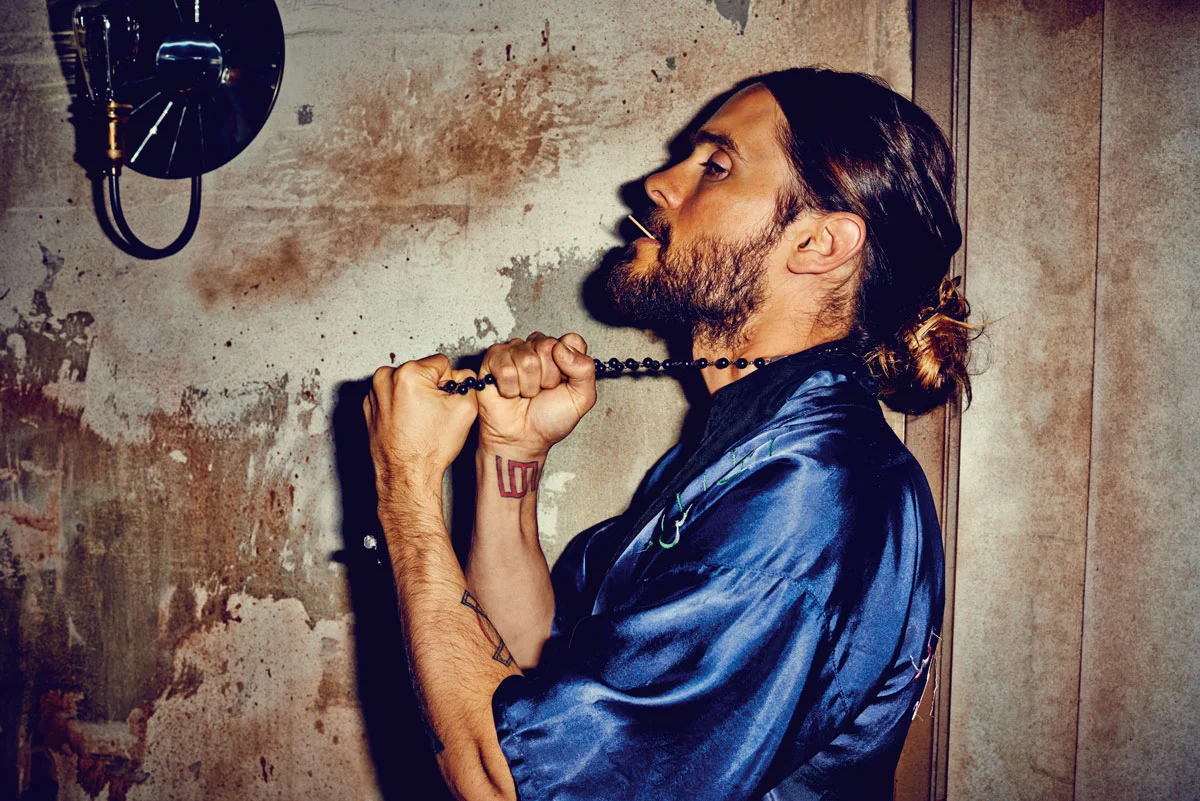
Vintage silk kimono stylist’s own and rosary necklace in sterling silver and onyx by _William Henry_.
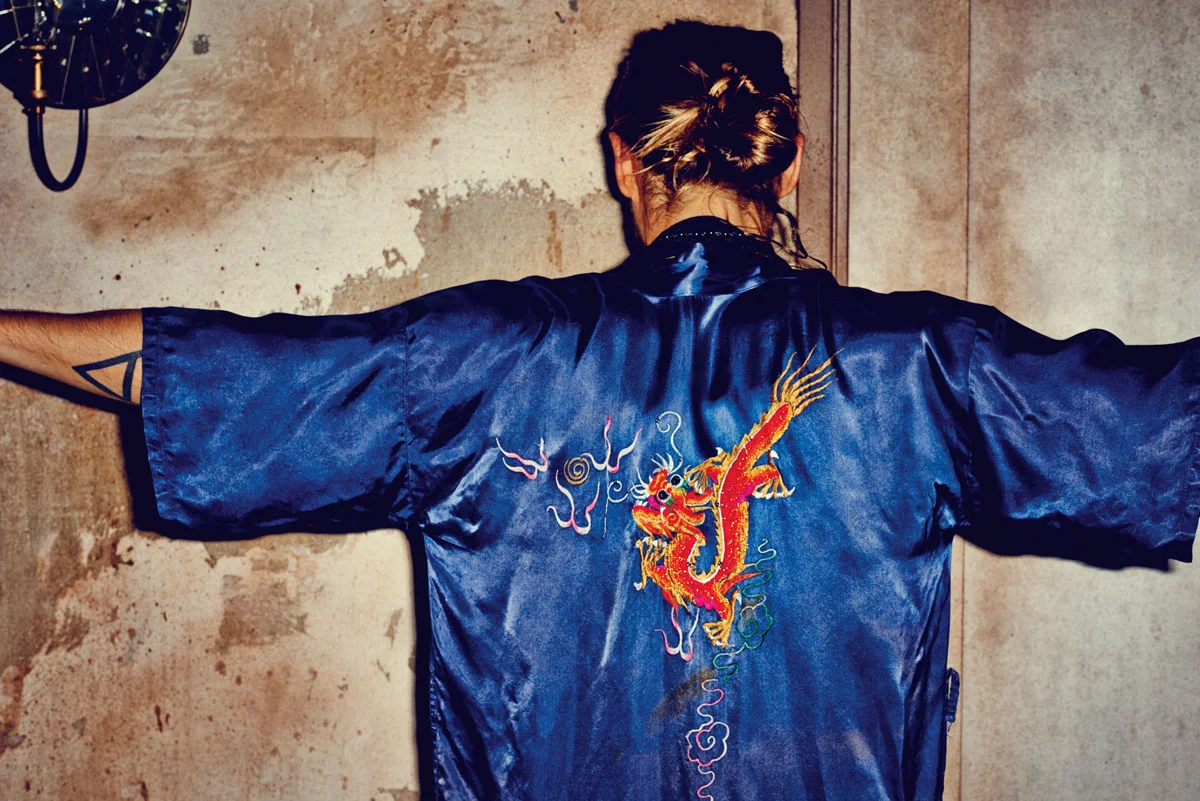
Vintage silk kimono stylist’s own and rosary necklace in sterling silver and onyx by **William Henry**.
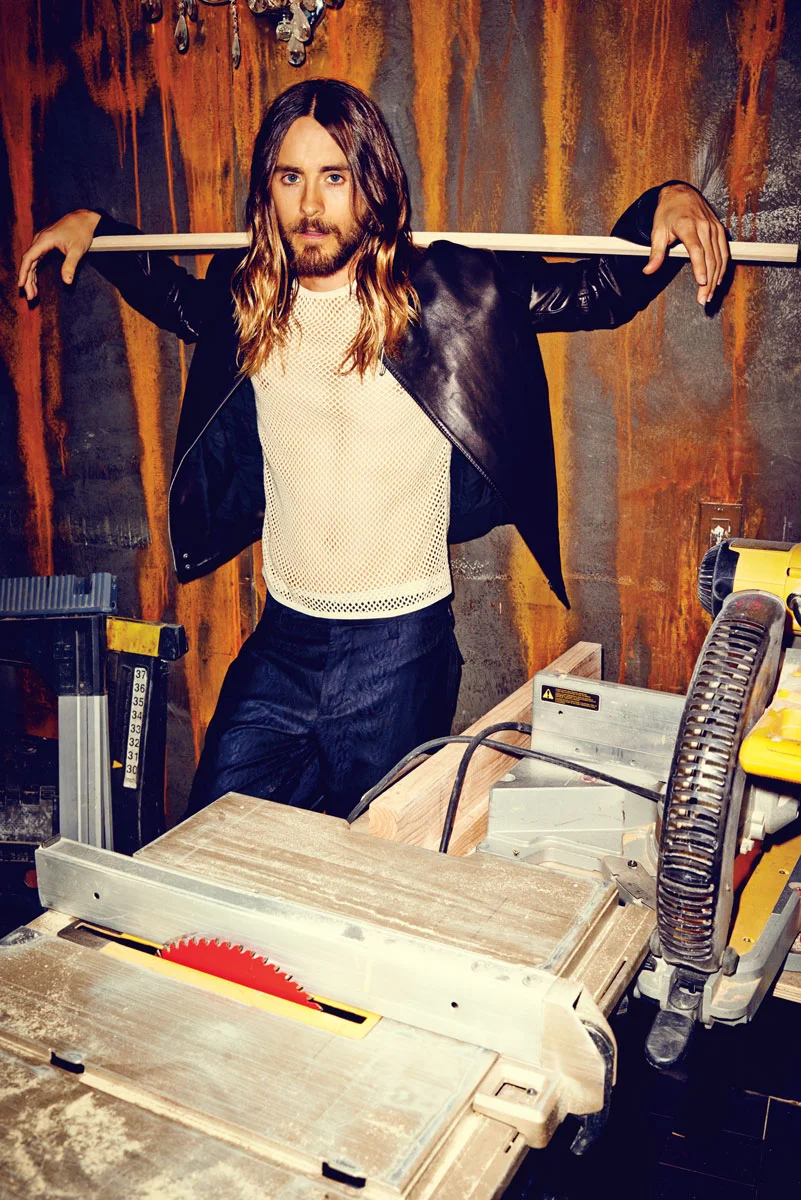
Leather jacket by **Balenciaga**, Mesh tank top by **Saint Laurent** **by Hedi Slimane**, and Trousers by **Marc Jacobs**.
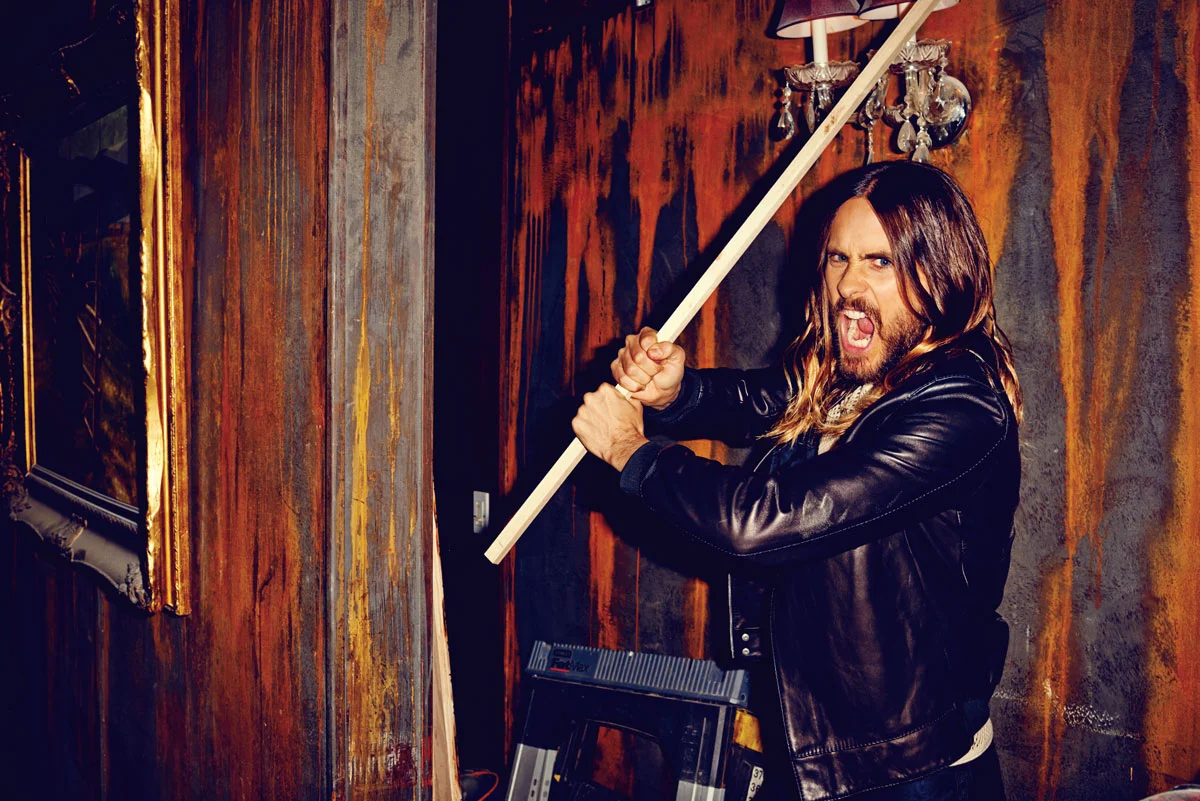
Leather jacket by **Balenciaga**, Mesh tank top by **Saint Laurent by Hedi Slimane**, and Trousers by **Marc Jacobs**.
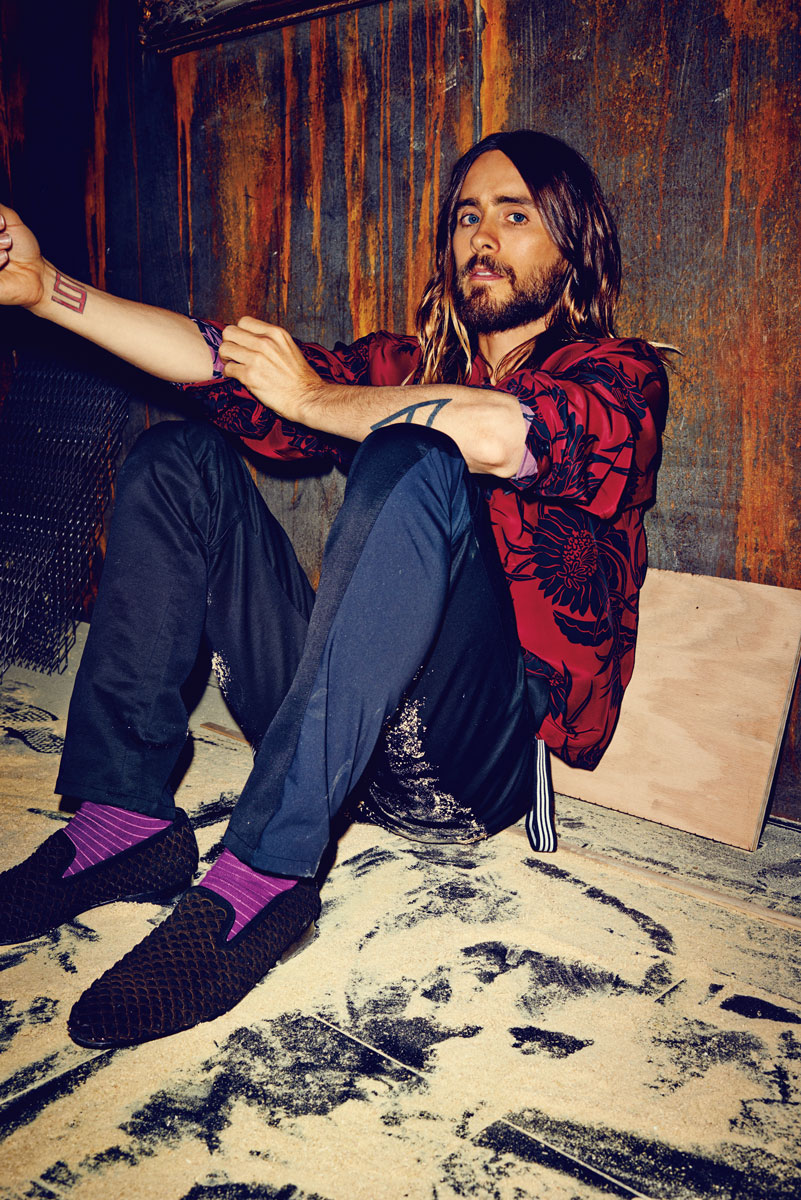
Hawaiian print shirt by **Prada**, Tank top by **American Apparel**, Trousers by **Marc Jacobs**, loafers by **Louis Leeman**, and socks by **Paul Smith**.

Hawaiian print shirt by **Prada**, Tank top by **American Apparel**, Trousers by **Marc Jacobs**, loafers by **Louis Leeman**, and socks by **Paul Smith.**

Coat with lamb’s wool collar by **Diesel Black Gold**, Tank top by **Michael Kors**, and Arrow pendant necklace in fossil mammoth ivory and sterling silver by **William Henry**.

Silk blazer by **Marc Jacobs**, Tank top and Pinstripe trousers by **Michael Kors**, Floral pocket square by **Dries Van Noten**, and Snake bracelet in sterling silver and rubber by **William Henry**.

Silk blazer by **Marc Jacobs**, Tank top and Pinstripe trousers by **Michael Kors**, Floral pocket square by **Dries Van Noten**, and Snake bracelet in sterling silver and rubber by **William Henry**.
[](#)[](#)
Jared Leto
If You Think This Universe Is Bad, You Should See Some Of The Others
I. LONDON “This is where my place is on the world.”
And he can’t get inside of it. Jared Leto is juggling the contents of his pockets along with a conversation about the universe, lingering in a London hotel hallway, denied entry to his place in the world—albeit a temporary one, for a handful of evenings, until an airplane pulls him back up off the grid and the phone in his pocket is as hidden from the satellites as much as the lint. “Fuck. Do you have the key?”
II. LIGHT Leto has endured multiple 15-hour days, ambling the gloom of British pavements, temporarily red-carpeted for the premiere of Dallas Buyers Club (a film for which he has rightfully been nominated for a Best Supporting Actor Oscar, and likely will have won it by the time you read this). His ability to not blink when a flashbulb shrinks his retinas to pinpoints, is not entirely an instinct, but likely mastered on stages throughout the globe, fronting his wildly popular rock outfit Thirty Seconds to Mars. Here is a man drenched more often than not in luminous floodlight. The lower-lumen sidewalk bulbs for film events are dim to him. One can imagine more evolved future ancestors of Leto’s marveling at how this creature managed to never blink in the face of a bright bulb, or the sun. Or, a challenge, for that matter.
Put another way: the muscles in his eyelids are barely used. Leto always appears aware. His eyes like cavernous wells of clear cerulean through which he can perceive his path; pre-destined and carved onto the parchment of an ancient scroll, the ink dripping down the quill barrel of a coal-black raven’s wing, staining the page like the tattoos that crawl up both Leto’s arms, ending at his neck. He has a map only he can see.
Certainly, this is a bit much. But we stand in the company of an individual entirely inhabiting his moment, and all evidence points to his luxuriating in it. This is a thankful and aware kind of pleasure, though, as a note of gratitude colors his every comment. It is interesting to listen to the soft-spoken Leto casually discuss being awarded over 30 prizes (so far) for his role as Rayon, the transgender AIDS patient who forms a business relationship (and unlikely friendship) with the homophobic and rodeo-rough Ron Woodroof (played by the also-nominated Matthew McConaughey). Leto did not cower recently, in Santa Barbara, when a film-festival attendee spoke out of turn, loudly from the throng, accusing him of “trans-misogyny.” (Leto responded with his own question: “Because I am a man, I don’t deserve to play that part? So you would hold a role against someone who happened to be gay or lesbian—they can’t play a straight part?”) Again, Leto does not blink, inviting the heckler backstage to continue their conversation in private.
So, among the things that have converged upon this place in the world—where Leto now stands, on the wrong side of a locked door in London—also include his recent music video for “Up in the Air” surpassing 17 million views (and counting), his entirely self-made documentary about battling the music industry (Artifact) climbing into the top ten most-watched documentary list on iTunes, and learning there are as many as 30 accolades to collect for a single supporting role, with more to come.
Something is clearly happening. Getting inside of this room is not it.
III. EARTH “The way that we think about our position in the world, in relationship to the planet, has changed because of the way we travel from place to place,” Leto says, plunging his thin hands into the pockets of his fur-lined, hooded parka. “We now look down on the planet rather than looking across. I met with the creator of Google Earth and he asked me, ‘What have you learned from using Google Earth?’ And, you know, I gave him some bullshit answer. But, actually, the thing that I learned is that we all see the planet differently now. We look down on ourselves. We used to look across the horizon. Now, we look down. We all have a map in our mind of where we may be and the ability to access that.”
And everyone else knows where he is, precisely, thanks to the phone in his hand. Jared Leto, like the rest of us, is but a pixel on a circuit board created by wealthy pale people in Silicon Valley.
“Exactly!” he exclaims, wide eyes widening more. “Your perspective changes because of location-based applications. Your perspective has now become, ‘This is where my place is on the world.’ Which is interesting. It’s from the top looking down. Which is kind of strange and interesting, that our perspective is from above. From space.”
IV. STARS These are odd thoughts coming from a star. A star is a dying thing. When someone is deemed a rising star, they are in fact dying at a faster rate than the ones merely flickering shyly in the deepest black. Where does that leave Leto?
He appears to be both rising and hovering, a kind of firefly that won’t be shooed. His mettle proven by just about every film he makes, primarily because of the great sacrifice—the risk—involved in every cherry-picked role. He knows when a film works or does not. Dallas Buyers Club works. The magical things aligned, fell into place, created a celestial pattern—if you will follow this thought through with us—a solar system, organized, with orbits, nothing colliding but a great story and its two lead actors at the peak of their all-or-nothing, take-me-as-I-am-or-not-at-all mid-career leaps into the wincing face of expectation. Leto once gained over 60 pounds and made a film we all forgot to go see (Chapter 27). He, as much as anyone else, is fine with that aspect of chance too: a risk without dividend.
“I’ve made a lot of films that have fallen short,” he admits. “Films where we had the right intentions. Independent art house films that we all had high hopes for, but fell short. Gaining sixty-seven pounds for Chapter 27. Yeah, I think I’m willing to risk everything. I don’t say that with any conceits. I say that as a fact. I don’t see there being reward in another way. At least any worthy one. So when they connect with people and the films resonate, or the performance resonates—it’s a really wonderful thing to celebrate that.”
V. DOCUMENTATION You can see the risk in Artifact. In it, Leto betrays a particular brand of frustration that never crosses over into tantrum. He absorbs information, lays it all out, and determines exactly how he can manage to continue pursuing the things he desires most in his heart. He expects nothing, but appears willing to lose everything. Artifact is a film he edited himself, so without seeing what bits were cut to create this impression, a leap of faith might be necessary. But it’s a simple story that anyone could learn from, and aptly named, because it will likely be studied in the future by anyone left in the music business who cares to know what went wrong in this overlap between the old way and the new.
The film tells the story of how Thirty Seconds to Mars went to battle with EMI over an unfair contract and how the “tiny” band beat the giant corporation. (Sort of. They end up re-signing a contract with the very beast they sought to topple, albeit on somewhat better terms.) The film has the potential for catharsis, but falls short. The beast has been merely wounded. It can still crawl. And, it is still hungry. Which is why it’s worrisome that Leto has chosen the likes of Daniel Ek (aka, the Thom Yorke-battered CEO of the streaming music service Spotify) to appear in his film to discuss possibilities of future fairness.
“Daniel Ek’s participation is really to talk about some of the possibilities in the future and some of the opportunities that are out there,” he says. “I think it’s all one great debate to have. Everyone has a voice. And artists should have more of an opinion and a voice and participate in the digital architecture of tomorrow. So I think it’s great that Thom \[Yorke\] is speaking up and speaking his mind. I’m all for that debate. I think the biggest issue is probably that Spotify is paying labels and then the labels are not paying artists. It’s back to that same old issue of corruption. Treating artists unfairly. The funny thing is, there’s enough to go around. They could make fair, transparent deals. They could treat artists like partners. And they’d still make plenty of money. But, for some reason, they don’t. Maybe they will. Not everyone is bad.”
VI. PERFORMANCE David Bowie has been able to do both, with varying levels of success. Prince can only play himself. Bruce Willis is a terrible harmonica player and Mick Jagger was only good in the 1970 film Performance (as himself). In this regard, you might have to look no further than Dallas Buyers Club to debunk the actor-musician curse. If not for Leto, then for his lover Sunny, portrayed by Deerhunter and Atlas Sound frontman Bradford Cox. The leap from rock stardom to screen stardom would appear, on the surface, to be effortless. They both demand a kind of theatricality, with each profession building up songs and stories as real places to inhabit. (Watch that Thirty Seconds to Mars video for “Up in the Air,” where the crossover is blissfully explicit.) Of course, there is also rock’s long legacy of androgyny for Leto to lean on too.
In the case of Rayon—as played by Leto—she memorably chides Woodroof for not recognizing a photograph of Marc Bolan of T. Rex. If you imagine that Leto might be reluctant to explore this particular area where the seams of his self-tailored suit (of music and film) are most tightly hemmed, you’ve forgotten (again) that Leto does not blink. He addresses the idea head on.
“The Marc Bolan element and the glam rock element of the film was the director’s contribution. I actually opposed that,” Leto says, matter-of-factly, absent any malice or ill will. “There was more of that in the film originally. And I think that for the director \[Jean-Marc Vallée\], that was his throughway. That was his kind of guidepost into the world that Rayon lives. It was a way for him to understand her. I think it probably made a really interesting aspect of the film, to have that connection and to have Rayon have one of his heroes be Marc Bolan. That’s great. Marc Bolan was an awesome person. But, for me, I made it very clear early on that I saw Rayon as a man who wanted to live his life as a woman, not someone who enjoyed putting on women’s clothing. If they wanted that kind of performance—or anything glam, or anything drag queen-y—I wasn’t the person for the part.”
When Leto speaks of Rayon, you hear the sound of someone recalling time spent with a loved one. Rayon is a person. She is a friend. Herein is what might make him the actor that he is. That Leto can long for a person who exists but cannot be pinpointed, never tied to a coordinate, but living on inside of him, as strong as the memory of a mate whose address has long ago been misplaced, back when people saved envelopes and tucked them in between the pages of overstuffed address books. What an old, cluttered, faraway analog world that seems to us now. A wonderful place, in other words.
“She’s an incredible, empathetic, beautiful dreamer,” Leto says of Rayon. “A heart the size of an ocean. She’s an absolutely one-of-a-kind creature. So, a lot of love and support for her as well. I feel like she became a person, a real person. Especially because I was so deep inside of her. I really feel like I got to know this person. It became like a living, breathing life. It was a once-in-a-lifetime role.”
VII. PATHWAYS Door unlocked, Jared Leto is reclining inside his hotel room above the streets of London. It is dark. He has fielded questions from strangers and answered each one, from the banal to the belligerent, with nary a blink. Eyes wide, errant locks of long hair occasionally pushed behind an ear to get a better look, angling beneath the floodlights to get a good glimpse of his interlocutor. The fact is: Jared Leto doesn’t do what you are supposed to do and he gets away with it. Makes films when he wants to. Records when the time is right. It might be luck, it might be talent, it could be hard work, or it could just be fueled by the naïve optimism that comes from a once-broke Louisiana kid who was told early on that being creative might not make you any less broke, but it might make being broke a little less shitty. It’s why his eyes are wide and blinking them is a waste of precious time. There’s too much to take in, too much to see. Fuck Google Earth. Technology is a weed. It blocks pathways.
“This is a crazy time in my life, but it’s a focused time,” he says. “It’s not like it’s out of control. You only get to do this once and in this case once may be the only time you get to do it. It’s a funny way to say it, but it’s kind of true. I’m acutely aware of that and very respectful of the path I’m walking down. I’m glad that this happened to me now and not when I first started. It’s a really good thing.”
_Photographer_: Eric Ray Davidson for artmixcreative.com. _Stylist_: Kemal and Karla for thewallgroup.com. _Hair_: Chase Kusero at chasehair.com. _Makeup_: Jamie Taylor for thewallgroup.com. _Photography Assistants_: Jules Bates and Mark McClanahan. _Retouching_: Pistol Studios at pistolstudios.com. _Location_: Dirty Laundry, Hollywood at dirtylaundrybarla.com.
Grooming Notes: Voyage d’Hermès moisturizing face and body balm by Hermès. Salt spray by Chase Kusero and organic coconut oil.
